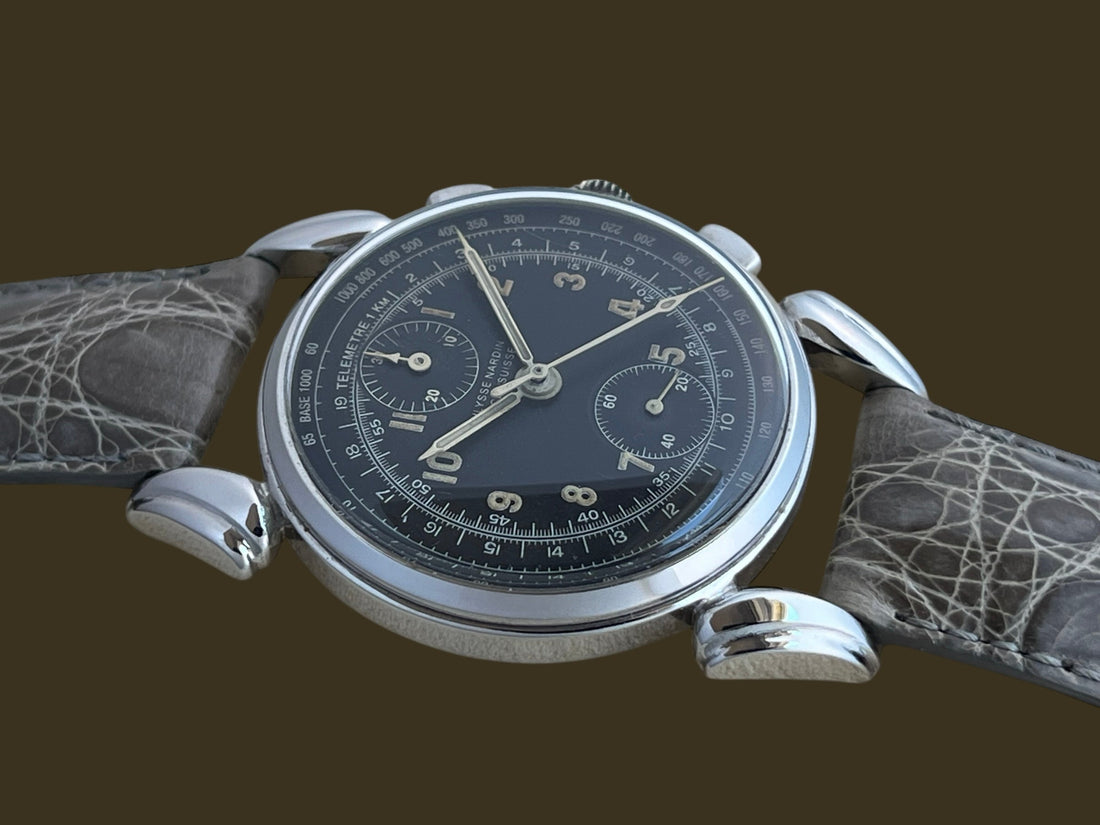
The Art of Precision: A Journey Through the History of Chronograph Watches
Share
Few complications in watchmaking capture both the spirit of innovation and human ambition quite like the chronograph. More than just a tool for measuring time, it is a symbol of precision, performance, and the enduring fascination with mastering every second.
The Birth of the Chronograph
The story begins in 1821, when Nicolas Rieussec, watchmaker to King Louis XVIII of France, invented the first device capable of measuring elapsed time — the “chronograph”, from the Greek chronos (time) and graphein (to write). His invention literally “wrote” time by marking a dot of ink on the dial to record the duration of an event, famously used to time horse races.
Decades later, in 1862, Adolphe Nicole refined the design by introducing the reset function, allowing for repeated timing without restarting the movement — a key milestone that shaped the chronograph as we know it today.
The Chronograph Takes Flight
By the early 20th century, the chronograph had found its place among explorers, aviators, and scientists. Longines, Breitling, Ulysse Nardin and Heuer were pioneers in creating practical wrist chronographs for professionals — tools used to navigate the skies, measure speed, and calculate distance.
In 1915, Gaston Breitling introduced the first independent chronograph pusher, followed by the dual-pusher system in 1934, allowing start, stop, and reset operations separately. This innovation transformed the chronograph into an essential instrument for pilots and engineers.
Golden Age of the Chronograph
The mid-20th century marked the golden era of mechanical chronographs. These watches became synonymous with performance, elegance, and technical mastery.
Among the most iconic creations:
Rolex Daytona – Born in the 1960s and forever linked to motor racing legend Paul Newman, the Daytona became one of the most coveted chronographs in history.
Omega Speedmaster – Nicknamed the “Moonwatch”, it accompanied Apollo 11 astronauts on the first lunar landing in 1969.
Heuer Carrera – A design icon inspired by the Carrera Panamericana race, it defined the clean, legible style of racing chronographs.
Zenith El Primero – Introduced in 1969, it was the first automatic high-frequency chronograph movement, beating at 36,000 vibrations per hour.
Universal Genève Compax and Tricompax – Elegant, balanced, and technically advanced, they remain favorites among vintage collectors.
These watches not only measured time — they defined it, symbolizing precision and adventure in equal measure.
The Collector’s Perspective
To collectors, a chronograph represents more than functionality; it embodies mechanical artistry and historical storytelling. Each model reveals an era’s design philosophy and technical evolution — from military field chronographs of the 1940s to the luxury sports models of today.
Collectors value the movement architecture, dial configuration, and historical provenance. A beautifully patinated vintage chronograph tells a story — of races run, flights taken, and moments captured in time.
Brands like Audemars Piguet, Vacheron Constantin, and Patek Philippe have elevated the chronograph to haute horlogerie, blending complexity and elegance in masterpieces that are both instruments and art.
Chronographs Today
In the modern era, the chronograph remains a symbol of technical excellence and timeless style. Whether powered by a traditional manual movement or an advanced automatic caliber, its spirit endures — connecting today’s watch enthusiasts to a lineage of innovation spanning two centuries.
From the racetrack to the cockpit, from the moon’s surface to the collector’s wrist, the chronograph continues to remind us of one simple truth: time, when measured with passion, becomes an art form.





